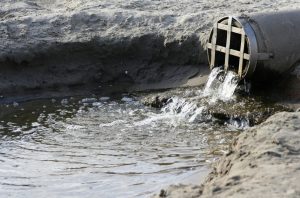
Water contamination is a significant issue and there are a number of sources including oil spills, agricultural runoff, industrial pollution, and more. Many of our surface and groundwater sources are contaminated with plastic, chemicals, and other pollutants. Water is essential for all life, yet 80% of global wastewater is untreated and dumped in the environment. This increases toxicity levels and the water quality is significantly degraded. In this article, we will look at four common causes of water contamination in more detail and what you can do to solve your water quality problems.
Agricultural Pollution
Agricultural activities consume approximately 70% of global freshwater and yet it’s the leading cause of water pollution. In the U.S. farming and livestock is the primary source of contamination in streams and rivers, the second highest polluter of wetlands, and the third highest for lakes. Another problem is the contamination of groundwater and estuaries caused by agricultural runoff that flushes toxic chemicals, such as fertilizers, pathogens, pesticides, and animal waste into the waterways. Another huge concern is nutrient pollution caused by excessive levels of phosphorus and nitrogen in the air and water. This causes algal blows in water that are toxic for humans and aquatic flora and fauna.
Oil Pollution
We tend to notice major oil spills and the devastating effects that they have on flora and fauna. But, many people don’t know about the daily leaks and spills of oil that are washed into the drains after rainfall. It’s estimated that around 50% of the 1 million tons of oil used domestically enters the water supply at some point. To put this into some perspective, around 10% of oil transported via shipping enters the water. Toxic oil pollution in water is a serious health risk and contaminated water should not be used or consumed.
Wastewater and Sewage
A wide variety of contaminants are washed into the drains every day including personal hygiene products, pharmaceuticals, household chemicals, human waste, and more. These are flushed into the drains and sewers along with fertilizers, pesticides, road salts, debris, grease, oil, and other contaminants during rainfall runoff. This creates a dangerous mix of contaminants that can enter surface and groundwater sources. Around 80% of wastewater enters our environment with no treatment and this rises to 95% in less developed nations. That said, the EPA has stated that more than 850 billion gallons of untreated wastewater are released by our aging infrastructure annually.
Radioactive Materials
Some radioactive materials from various medical, industrial, scientific, and even military sources can find their way into the environment. These contaminants can persist for centuries without losing much of their toxicity for human and animal health.
What Can I Do to Improve My Water Quality?
The first step is to organize a laboratory water test to determine the true makeup of your water. Next, use that data to choose water treatment systems that can remove the aforementioned contaminants. If you want to improve your water quality, contact your local water treatment specialist.
